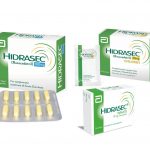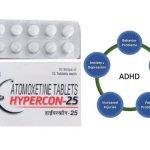Molasma: Uses, Dosage, Side Effects, Interactions

What is Molasma?
Molasma is a medication used for the treatment of wheezing and shortness of breath from lung problems (such as asthma, chronic obstructive pulmonary disease, bronchitis, and emphysema). Molasma contains terbutaline sulfate which belongs to a class of drugs known as bronchodilators. It works by relaxing the muscles around the airways so that they open up and you can breathe more easily.
Molasma forms has been used systemically off-label to reduce contractions of preterm labor and uterine hyperstimulation. However, The U.S. Food and Drug Administration (FDA) is warning the public that terbutaline should not be used in pregnant women for prevention or prolonged treatment (beyond 48-72 hours) of preterm labor in either the hospital or outpatient setting because of the potential for serious maternal heart problems and death.
Each tablet of Molasma contains terbutaline sulfate, available in 2.5 mg and 5 mg strengths.
How should I take Molasma?
Molasma comes as a tablet to take by mouth. The tablets are usually taken three times a day, once every six hours. The recommended dose is presented below:
Molasma Dosage For Asthma And Bronchospasm
Adult dosage (ages 18–64 years)
Typical starting dosage: 5 mg taken three times per day, 6 hours apart.
If you develop side effects: Your doctor may lower your dosage to 2.5 mg taken 3 times per day, every 6 hours.
Maximum dosage: 15 mg in one 24-hour period.
Child dosage (ages 16–17 years)
Typical starting dosage: 5 mg taken three times per day, 6 hours apart.
If your child develops side effects: Your doctor may lower your child’s dosage to 2.5 mg taken 3 times per day, every 6 hours.
Maximum dosage: 15 mg in one 24-hour period.
Child dosage (ages 12–15 years)
Typical starting dosage: 2.5 mg taken 3 times per day.
Maximum dosage: 7.5 mg in one 24-hour period.
Child dosage (ages 0–11 years)
This medication hasn’t been studied in children younger than 12 years. It shouldn’t be used in children in this age range.
Senior dosage (ages 65 years and older)
There are no specific recommendations for senior dosing. Older adults may process drugs more slowly. A normal adult dosage may cause levels of this drug to be higher than normal in your body. If you’re a senior, you may need a lower dosage or a different treatment schedule.
Follow the directions on your prescription label carefully, and ask your doctor or pharmacist to explain any part you do not understand. Take Molasma exactly as directed. Do not take more or less of it or take it more often than prescribed by your doctor.
Each dose of Molasma should control your symptoms for at least 6 hours after you take it. If you find that your symptoms return before it is time for your next dose, that Molasma does not control your symptoms as well as it did at the beginning of your treatment, or that your symptoms are getting worse, call your doctor. These may be signs that your condition is worsening.
Molasma may control your symptoms but will not cure your condition. Continue to use Molasma even if you feel well. Do not stop taking Molasma without talking to your doctor.
What are the possible side effects of Molasma?
Molasma may cause serious side effects including:
⦁ uncontrollable shaking,
⦁ nervousness,
⦁ dizziness,
⦁ drowsiness,
⦁ difficulty falling asleep or staying asleep,
⦁ weakness,
⦁ headache,
⦁ nausea,
⦁ sweating, and
⦁ dry mouth
Get medical help right away, if you have any of the symptoms listed above.
The most common side effects of Molasma include:
⦁ tremor,
⦁ nervousness,
⦁ dizziness,
⦁ headache,
⦁ drowsiness,
⦁ palpitation,
⦁ rapid heart rate,
⦁ shortness of breath,
⦁ chest discomfort,
⦁ nausea,
⦁ vomiting,
⦁ weakness,
⦁ flushed feeling,
⦁ sweating,
⦁ pain at the injection site,
⦁ anxiety,
⦁ muscle cramps, and
⦁ dry mouth
Tell the doctor if you have any side effect that bothers you or that does not go away.
These are not all the possible side effects of Molasma. For more information, ask your doctor or pharmacist.
What drugs and food should I avoid while taking Molasma?
Avoid situations that may worsen your respiratory condition such as exercising in cold, dry air; smoking; breathing in dust; and exposure to allergens such as pet fur. Talk to your doctor if you are taking the following medications:
⦁ amitriptyline
⦁ doxepin
⦁ phenelzine
⦁ selegiline
⦁ metoprolol
⦁ labetalol
⦁ furosemide
⦁ hydrochlorothiazide
Storage Method
Store in a dry and cool place, and avoid direct sunlight





